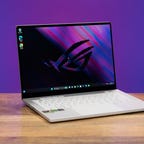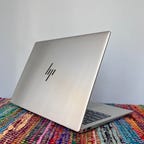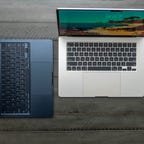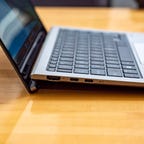Best Lightweight Laptop for 2024
Looking for an ultralight ultraportable? These are our favorite lightweight laptops, tested and reviewed by CNET's laptop experts.
Price
The current sweet spot for a reliable laptop to handle average work, home office or school tasks is between $700 and $800. For a model suitable for creative work or gaming, plan to spend $1,000 and up. Every brand of laptop can be found discounted online at one time or another, so it pays to track deals to find the lowest price.
Operating System
For the most part, Microsoft Windows and Apple's MacOS do the same things, but they do them differently. Unless there's an OS-specific application you need, go with the one you feel most comfortable using. MacBooks currently start at $999, so if you need a laptop for significantly less, it’s Windows. A Chromebook running on Google’s ChromeOS is an excellent (and less expensive) alternative, but it can’t run Windows or Mac software.
Size
Remember to consider whether having a lighter, thinner laptop or a touchscreen laptop with a good battery life will be important to you in the future. Size is primarily determined by the screen, which in turn factors into battery size, laptop thickness, weight and price.
Screen
Considerations for the display include size, type (LCD or OLED in most cases), resolution, what types of content you'll be looking at and whether or not you'll be using it for creative work. Higher resolutions are better for fitting more on a screen and look for a dot pitch of at least 100 pixels per inch (ppi) as a rule of thumb. If the color range is important, look for at least 100% sRGB, or better yet 100% DCI-P3.
Processor
The processor, also known as the CPU, is the brain of a laptop. Intel and AMD are the main CPU makers for Windows laptops with a staggering selection between them. Generally, the faster the processor speed and the more cores it has, the better the performance will be.
Graphics
The graphics processor (GPU) handles all the work of driving the screen and generating what gets displayed, as well as speeding up a lot of graphics-related (and increasingly, AI-related) operations. For Windows laptops, there are two types of GPUs: integrated (iGPU) or discrete (dGPU). For things like video editing, design work as well as gaming, you'll need a dGPU.
Memory
We highly recommend 16GB of RAM, with 8GB being the absolute minimum. RAM is where the operating system stores all the data for currently running applications, and it can fill up fast. After that, it starts swapping between RAM and the slower storage drive.
Storage
You'll still find cheaper hard drives in budget laptops and larger hard drives in gaming laptops, but faster solid-state drives (SSDs) have all but replaced hard drives in most models. A 256GB SSD is the minimum, and 512GB will last longer without getting filled up. Opt for 1TB or more if you work with large video files or plan to store a large game library on your laptop.
Our Picks

Some laptops are designed to be left at home, acting like desktop computers that you can lug from room to room. Other laptops place a priority on portability, where they are light enough to be tossed in your bag for daily commutes and regular travel, allowing you to return home at the end of the day without a sore shoulder. The picks you see here fall into the latter category, but this isn’t simply a selection of the smallest laptops we’ve reviewed.
These are our favorite lightweight laptops we’ve tested in the past year, and they span a variety of screen sizes, from 13 to 16 inches. Most are less than three pounds with the heaviest being a high-powered, 14-inch model for gaming and content creation that weighs a reasonable 3.3 pounds. We’ve also included a pair of business laptops for those whose job has them on the road more than in the office.
Our laptop experts have decades of experience testing laptops under controlled conditions in the CNET Labs. In addition to benchmark testing to assess a laptop’s performance, we also perform extensive hands-on tests to assess a laptop’s design and features, including getting an official weight for each laptop we review.
Best lightweight laptops for 2024
Most 14-inch laptops weigh around 3.5 pounds, which makes the 3.1-pound HP Pavilion Plus 14 lighter than average. We like it because it’s light enough for travel but big enough that you won’t feel cramped while working on it day in and day out. We also like the many configuration options and the price.
HP offers AMD and Intel processors for the Pavilion Plus 14, which can also be configured with entry-level discrete graphics. There are also multiple displays to match your budget, including a beautiful OLED panel. The line starts at $850, and HP regularly discounts it to just $550. We recommend getting that OLED screen if you can afford it. It adds only $150 to the package, but it’s worth it -- especially when you can find it on sale and get the OLED upgrade for $700. That's a great price for a well-rounded, well-built laptop with an OLED display.
M3 MacBook Air (2.7 pounds)
Best lightweight MacBook
For Apple's latest MacBook Air, little has changed from its predecessor beyond a move from Apple's M2 silicon to M3 chips. The performance differences between the two are modest, but graphics performance does get a notable bump. The biggest feature additions are faster Wi-Fi 6E support and the capability to run dual external displays, albeit at the cost of having the Air's lid closed.
The 13.6-inch Liquid Retina display is beautiful, and the MacBook Air chassis is both thin and rigid while weighing only 2.7 pounds. The M3 Air isn’t just one of our favorite lightweight laptops, it’s our favorite laptop overall. With its mix of portability and build quality, performance and battery life, it’s the best laptop for most people.
Asus Zenbook S 13 OLED (2.2 pounds)
Best lightweight 13-inch laptop
It's not easy to find an ultralight laptop that still feels sturdy, but the Asus Zenbook S 13 OLED does. At just 2.2 pounds, the 13.3-inch laptop is lighter than Apple's MacBook Air, making it the perfect little travel companion. The ceramic-like finish on the lid provides added stiffness so flex isn't a concern, and the same can be said about the keyboard deck. Despite its compact footprint, Asus managed to squeeze in a comfortable keyboard and a big touchpad.
The laptop features a 13.3-inch, 2.8K OLED display with excellent color and contrast. We tested a 13th-gen Intel Core U-series model, and now the line has been updated to Core Ultra for the same $1,200 price. There's nothing quite like the Zenbook S 13 OLED at its price. It's a commuter's delight.
Acer Swift Edge 16 (2.7 pounds)
Best lightweight 16-inch laptop
If you are looking for an optimum between screen size and portability in a laptop, the Swift Edge 16 is a great pick. Most 16-inch laptops weigh 4 pounds or more, which makes the Acer Swift Edge 16’s 2.7-pound weight rather eye-opening. It feels shockingly light for its size. About that roomy, 16-inch display. It’s a sharp (3.2K) and fast (120Hz) OLED panel with stellar contrast and color accuracy. The Swift Edge 16 merits consideration for anyone looking for a laptop for regular travel or commuting who is also unwilling or unable to be stuck with a cramped display.
It sells for $1,300 but can be found with a huge $450 discount at Best Buy where it's only $850.
Asus ROG Zephyrus G14 (3.3 pounds)
Best lightweight laptop for gamers and creators
Despite being a member of Asus' gaming-focused ROG family of laptops, the G14 has a more creative bent; it's technically considered an Nvidia Studio model and ships with Nvidia's Studio driver rather than the more common Game Ready version (you can swap them if you want). The compact 14-inch laptop weighs a reasonable 3.3 pounds and has the performance and the display quality you'll need for creative work, a business-quality 1080p webcam and a full selection of ports and connections (although, due to its AMD processor, its USB-C port is USB4 and not Thunderbolt 4).
Lenovo ThinkPad X1 Carbon Gen 11 (2.5 pounds)
Best lightweight business laptop
It delivers no surprises or revolutionary upgrades from past iterations, but the ThinkPad X1 Carbon's security features, build quality and performance remain excellent. Its 14-inch display and 2.5-pound weight are the sweet spot of enough screen space to work long stretches without needing to connect to an external display, while also being light enough for daily travel. With an industry-best keyboard, long battery life and greener construction, the X1 Carbon Gen 11 is a near-perfect business laptop.
Lenovo has increased pricing from previous Gen 11 to Gen 12 models to where we've reached a point where the latest ThinkPad X1 Carbon is no longer our recommendation for business execs unless your organization is large enough to qualify for volume pricing. For individual buyers, it's simply too expensive for the performance and battery life it provides. For most business users, the previous Gen 11 is the better buy.
HP Dragonfly G4 (2.5 pounds)
Another great lightweight business laptop
The HP Dragonfly G4 is not your typical corporate machine. Trim and sleek, yet rigid and ready to withstand the abuses of business travel, it is every bit a premium C-suite business laptop. Its 13.5-inch display has an unusual boxy 3:2 aspect ratio, giving it more room from top to bottom, allowing you to read more lines of a document or web page while keeping the Dragonfly G4 compact and effortlessly portable. The little laptop weighs just 2.5 pounds and also offers an uncommonly long battery life.
Other laptops we've tested
Asus Zenbook 14 OLED Q425: It's a boon to get an OLED display in such a portable package with great battery life for roughly $1,000, but the fit and finish feel decidedly midrange.
Lenovo Slim 7i: With an OLED display and a solid build, this is a rugged option for mainstream shoppers, but other touches are decidedly midrange.
Lenovo ThinkPad X1 Carbon Gen 12: The latest X1 Carbon has many charms, but they will remain out of reach for many business buyers constrained by budgets.
Dell XPS 16 9640: Dell's new 16-inch XPS model offers a unique design backed by strong performance and surprisingly long battery life. Just be prepared to pay for its many configurable charms.
Alienware M18 R2 Gaming Laptop: When you're this big, the sky's the limit.
Dell XPS 14 9440: The radical look is sure to turn heads, but some of the daring design elements could be turn-offs.
HP Omen Transcend 14: Neither a featureless slab nor a carnival of lights, HP's latest 14-inch Omen has its own unique flair. It doesn't scrimp on substance, either.
Lenovo Slim 7i: With an OLED display and a solid build, this is a rugged option for mainstream shoppers, but other touches are decidedly midrange.
Dell Inspiron 14 Plus 7440: For a reasonable $1,000, this 14-inch Dell model based on an Intel Core Ultra CPU lets you be productive and remain portable
Alienware m16 R2: This middle-class option for mainstreaming gaming fares better than average and is a sensible option for 1440p play.
Acer Predator Triton 14: With fast performance and a bright HDR screen, this mainstream 14-inch gaming laptop can be a great gaming value..
M3 MacBook Air 13: Apple's 2024 MacBook Air update is a straightforward performance boost to power you through the future of work, school and play at home or away.
Lenovo LOQ 15: Lenovo's entry-level model is the opposite of flashy, but it's got good performance and it's one of the cheapest RTX 4050 models (at least on sale).
HP Victus 16: It’s speedy and svelte, but gamers on tight budgets deserve more than this laptop's basic 60Hz panel.
Acer Nitro 16: With a roomy 16-inch, 16:10 display that's surprisingly bright and vibrant and powered by a full-octane RTX 4050 GPU, the Nitro 16 delivers the goods for gamers on tight budgets.
Acer Predator Helios Neo 16: The Helios Neo 16 is essentially a gussied-up version of the Acer Nitro 16. It just so happens to also have ample 3D performance for its budget-friendly price.
MSI Cyborg 15: It's one of the lowest-cost RTX 4050 laptops, but the Cyborg 15's GPU is restricted from running at full power, which puts a cap on 3D performance. Its display disappoints, too.
Asus ROG Zephyrus G14: Standout profiling and calibration for its class make Asus' first OLED in the line stand out from the crowd.
Lenovo ThinkPad Z13 Gen 2: It breaks with the ThinkPad tradition in many ways without abandoning the things that make it a ThinkPad.
How we test laptops
The review process for laptops consists of two parts: performance testing under controlled conditions in the CNET Labs and extensive hands-on use by our reviewers. This includes evaluating a device's aesthetics, ergonomics and features with respect to price. A final review verdict is a combination of both objective and subjective judgments.
We test all laptops with a core set of benchmarks, including Primate Labs Geekbench 6, Cinebench R23, PCMark 10, a variety of 3DMark benchmarks (whichever can run on the laptop), UL Procyon Photo and Video (where supported), and our own battery life test. If a laptop is intended for gaming, we'll also run benchmarks from Guardians of the Galaxy, The Rift Breaker (CPU and GPU) and Shadow of the Tomb Raider.
For the hands-on, the reviewer uses it for their work during the review period, evaluating how well the design, features (such as the screen, camera and speakers) and manufacturer-supplied software operate as a cohesive whole. We also place importance on how well they work given their cost and where the manufacturer has potentially made upgrades or tradeoffs for its price.
The list of benchmarking software and comparison criteria we use changes over time as the devices we test evolve. You can find a more detailed description of our test methodology on our How We Test Computers page.
Factors to consider
There are a ton of laptops on the market at any given moment, and almost all of those models are available in multiple configurations to match your performance and budget needs. If you're feeling overwhelmed with options when looking for a new laptop, it's understandable. To help simplify things for you, here are the main things you should consider when you start looking.
Price
The search for a new laptop for most people starts with price. If the statistics chipmaker Intel and PC manufacturers hurl at us are correct, you'll be holding onto your next laptop for at least three years. If you can afford to stretch your budget a little to get better specs, do it. That stands whether you're spending $500 or more than $1,000. In the past, you could get away with spending less upfront and look to upgrade memory and storage in the future. Laptop makers are increasingly moving away from making components easily upgradable, so it's best to get as good a laptop as you can afford from the start.
Generally speaking, the more you spend, the better the laptop. That could mean better components for faster performance, a nicer display, sturdier build quality, a smaller or lighter design from higher-end materials or even a more comfortable keyboard. All of these things add to the cost of a laptop. I'd love to say $500 will get you a powerful gaming laptop, for example, but that's not the case. Right now, the sweet spot for a reliable laptop that can handle average work, home office or school tasks is between $700 and $800 and a reasonable model for creative work or gaming is upward of about $1,000. The key is to look for discounts on models in all price ranges so you can get more laptop features for less.
Operating system
Choosing an operating system is part personal preference and part budget. For the most part, Microsoft Windows and Apple's MacOS do the same things (except for gaming, where Windows is the winner), but they do them differently. Unless there's an OS-specific application you need, go with the one you feel most comfortable using. If you're not sure which that is, head to an Apple store or a local electronics store and test them out. Or you can ask friends or family to let you test theirs for a bit. If you have an iPhone or iPad and like it, chances are you'll like MacOS too.
When it comes to price and variety (and, again, PC gaming), Windows laptops win. If you want MacOS, you're getting a MacBook. While Apple's MacBooks regularly top our best lists, the least expensive one is the M1 MacBook Air for $999. It is regularly discounted to $750 or $800, but if you want a cheaper MacBook, you'll have to consider older refurbished ones.
Windows laptops can be found for as little as a couple of hundred dollars and come in all manner of sizes and designs. Granted, we'd be hard-pressed to find a $200 laptop we'd give a full-throated recommendation to, but if you need a laptop for online shopping, email and word processing, they exist.
If you are on a tight budget, consider a Chromebook. ChromeOS is a different experience than Windows; make sure the applications you need have a Chrome, Android or Linux app before making the leap. If you spend most of your time roaming the web, writing, streaming video or using cloud-gaming services, they're a good fit.
Size
Remember to consider whether having a lighter, thinner laptop or a touchscreen laptop with a good battery life will be important to you in the future. Size is primarily determined by the screen -- hello, laws of physics -- which in turn factors into battery size, laptop thickness, weight and price. Keep in mind other physics-related characteristics, such as an ultrathin laptop isn't necessarily lighter than a thick one, you can't expect a wide array of connections on a small or ultrathin model and so on.
Screen
When it comes to deciding on a screen, there are a variety of considerations: how much you need to display (which is surprisingly more about resolution than screen size), what types of content you'll be looking at and whether you'll be using it for gaming or creative work.
You want to optimize pixel density; that's the number of pixels per inch the screen can display. Although other factors contribute to sharpness, a higher pixel density usually means sharper rendering of text and interface elements. (You can easily calculate the pixel density of any screen at DPI Calculator if you don't feel like doing the math, and you can also find out what math you need to do there.) We recommend a dot pitch of at least 100 pixels per inch (ppi) as a rule of thumb.
Because of the way Windows and MacOS scale for the display, you're frequently better off with a higher resolution than you'd think. You can always make things bigger on a high-resolution screen, but you can never make them smaller -- to fit more content in the view -- on a low-resolution screen. This is why a 4K, 14-inch screen may sound like unnecessary overkill, but may not be if you need to, say, view a wide spreadsheet.
Processor
The processor, aka the CPU, is the brains of a laptop. Intel and AMD are the main CPU makers for Windows laptops. Both offer a staggering selection of mobile processors. Making things trickier, both manufacturers have chips designed for different laptop styles, like power-saving chips for ultraportables or faster processors for gaming laptops. Their naming conventions will let you know what type is used. You can head to Intel's or AMD's sites for explanations so you get the performance you want. Generally speaking, the faster the processor speed and the more cores it has, the better the performance will be.
Apple makes its chips for MacBooks, which makes things slightly more straightforward. Like Intel and AMD, you'll still want to pay attention to the naming conventions to know what kind of performance to expect. Apple uses its M-series chipsets in Macs. The entry-level MacBook Air uses an M1 chip with an eight-core CPU and seven-core GPU. The current models have M2-series silicon that starts with an eight-core CPU and 10-core GPU and goes up to the M2 Max with a 12-core CPU and a 38-core GPU. Again, generally speaking, the more cores it has, the better the performance.
Graphics
The graphics processor (GPU) handles all the work of driving the screen and generating what gets displayed, as well as speeding up a lot of graphics-related (and increasingly, AI-related) operations. For Windows laptops, there are two types of GPUs: integrated (iGPU) or discrete (dGPU). As the names imply, an iGPU is part of the CPU package, while a dGPU is a separate chip with dedicated memory (VRAM) that it communicates with directly, making it faster than sharing memory with the CPU.
Because the iGPU splits space, memory and power with the CPU, it's constrained by the limits of those. It allows for smaller, lighter laptops, but doesn't perform nearly as well as a dGPU. There are some games and creative software that won't run unless they detect a dGPU or sufficient VRAM. Most productivity software, video streaming, web browsing and other nonspecialized apps will run fine on an iGPU, though.
For more power-hungry graphics needs, like video editing, gaming and streaming, design and so on, you'll need a dGPU; there are only two real companies that make them, Nvidia and AMD, with Intel offering some based on the Xe-branded (or the older UHD Graphics branding) iGPU technology in its CPUs.
Memory
For memory, we highly recommend 16GB of RAM (8GB absolute minimum). RAM is where the operating system stores all the data for currently running applications, and it can fill up fast. After that, it starts swapping between RAM and SSD, which is slower. A lot of sub-$500 laptops have 4GB or 8GB, which in conjunction with a slower disk can make for a frustratingly slow Windows laptop experience. Also, many laptops now have the memory soldered onto the motherboard. Most manufacturers disclose this, but if the RAM type is LPDDR, assume it's soldered and can't be upgraded.
Some PC makers will solder memory on and also leave an empty internal slot for adding a stick of RAM. You may need to contact the laptop manufacturer or find the laptop's full specs online to confirm. Check the web for user experiences, because the slot may still be hard to get to, it may require nonstandard or hard-to-get memory or other pitfalls.
Storage
You'll still find cheaper hard drives in budget laptops and larger hard drives in gaming laptops, but faster solid-state drives (SSDs) have all but replaced hard drives in laptops. They can make a big difference in performance. Not all SSDs are equally speedy, and cheaper laptops typically have slower drives. If the laptop has only 4GB or 8GB of RAM, it may end up swapping to that drive and the system may slow down quickly while you're working.
Get what you can afford, and if you need to go with a smaller drive, you can always add an external drive or two down the road or use cloud storage to bolster a small internal drive. The one exception is gaming laptops: We don't recommend going with less than a 512GB SSD unless you really like uninstalling games every time you want to play a new game.





